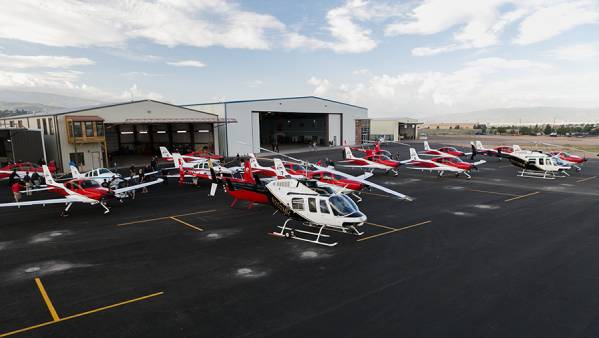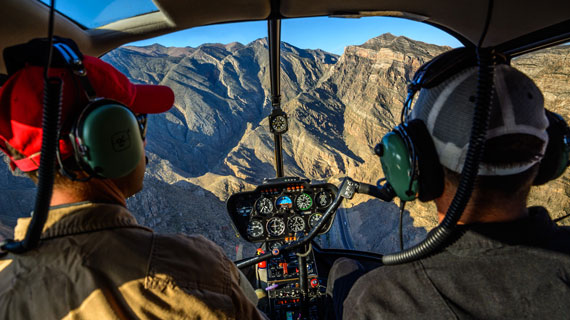How to Choose the Right Aircraft Maintenance School
Posted: October 06, 2020 | Author: Jaidyn Crookston | Read Time: 21 minutes
Students looking to become an aircraft maintenance technician (AMT) may find that discovering the right AMT school can be difficult. There are many options and this is a big decision, so here's how we suggest finding the right aircraft maintenance technician school for you.
Research and Compare AMT Schools
The first step to finding the right AMT school for you is doing some research. Look at multiple AMT schools, research and compare, then decide which one is the best for you. Take your time and be certain about which school you want to attend before paying any fees or rushing into something.
Here are some questions to ask when looking at AMT schools
- What type of maintenance training does the school offer?
- Does the school focus on airplane or helicopter maintenance?
- Does it cost more to get helicopter maintenance training?
- What kind of aircraft do students practice and learn on?
- Is the AMT school attached to a flight school or is it completely separate?
- Does the school follow FAA regulations?
- How long does the program take to complete?
- At the end of the program, will you be prepared and qualified to take the A&P license exam?
- Does the school have industry connections?
- Does the school provide pathways to a career through connections and partnerships?
- What are students saying about the school?
- How much does the program cost?
- What will you get for the cost?
- Is the AMT school attached to a university?
- Does the program come with anything extra, like a degree or other certifications?
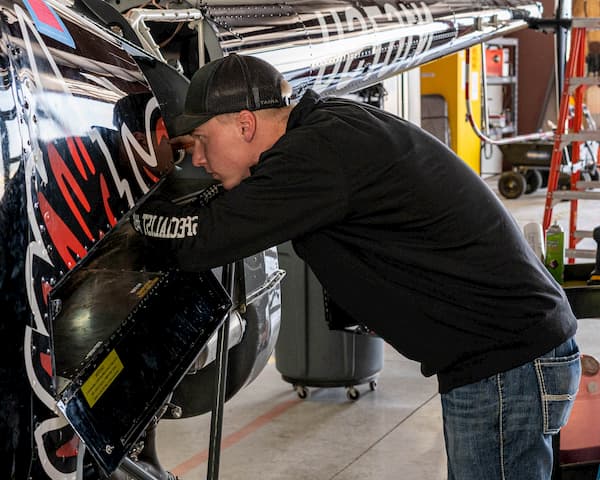
Once you’ve answered these questions for each of the schools you’re researching, you’ll be able to compare them and see if one school stands out over the others.
You can research the AMT school by looking at their website, social media pages, and online reviews. You can also contact the school by phone, email, or social media. This will allow you to ask any questions and get a feel for the kind of representation the school has.
If possible, tour as many schools as possible to see the facilities and speak to current students, faculty, and instructors. Because of distance, time, and cost, it won't be likely that you can visit all of them, but if possible make an effort to do so. Touring the school will be extremely helpful when deciding whether that school will be a good fit.
Each of the questions mentioned above is important when choosing an AMT school and are good indicators of a good maintenance school. Here’s why these are great questions to ask:
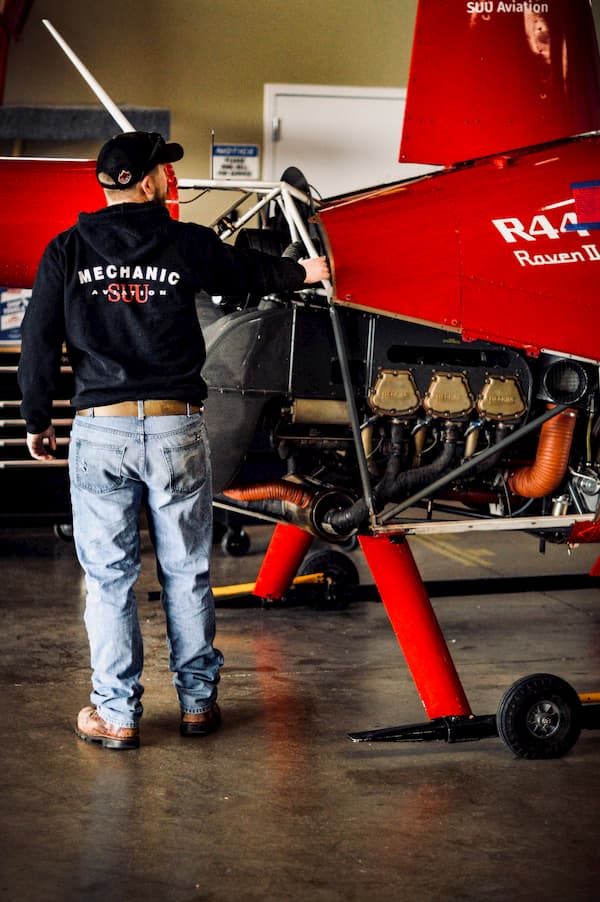
What type of maintenance training does the school offer?
Obviously, whatever schools you’re looking at should offer airplane and/or helicopter maintenance training if you want to become an aircraft mechanic. Make sure it’s an official AMT school instead of some other type of maintenance school.
Does the school focus on airplane or helicopter maintenance?
Most AMT schools focus on airplane maintenance. This is great if you want to work solely on airplanes throughout your career, but not so great if you want to focus on helicopter maintenance. Some AMT schools offer helicopter maintenance training at an additional cost. If you want to work mainly on helicopters throughout your career, it’s best to find an AMT school that offers helicopter maintenance training as part of the standard curriculum.
Does it cost more to get helicopter maintenance training?
If you already know that you want to focus on helicopter maintenance, you should find an AMT school that will offer this training at no additional cost. If you aren’t yet sure whether you want to focus on airplane or helicopter maintenance, then paying for a helicopter maintenance class may help you decide if that’s something worth pursuing.
One of the only AMT schools that offers helicopter maintenance as part of the standard curriculum is Southern Utah University's Aviation Program. This means that the program focuses just as much on helicopter maintenance as it does on airplane maintenance at no additional cost. This is extremely beneficial if you want to work mainly on helicopters throughout your career.
What kind of aircraft do students practice and learn on?
The kind of aircraft you have experience with is important when it comes time to find a job as a mechanic. This goes beyond simply having experience with airplanes or helicopters, and refers to which specific models of aircraft you have trained and practiced on.
If you have a specific employer in mind when you start your training, find out what aircraft that company uses and then look for an AMT school that trains on that aircraft. If you’re like most students and don’t know exactly where you want to work in the future, you can simply find an AMT school that will give you experience in multiple aircraft models. This will make you valuable to employers because you’ll be able to maintain more than one or two aircraft.
Don’t let this question hang you up too much. It’s impossible to know exactly which aircraft experience will help you land a job in the future, and experience with any aircraft will benefit you as you search for jobs. Most AMT schools will give you the necessary experience with various aircraft needed to help you start your career.
Is the AMT school attached to a flight school or is it completely separate?
An AMT school that’s attached to a flight school has benefits that a separate AMT school doesn’t. When you attend an AMT school that’s part of a flight school, chances are the students help maintain real aircraft used by the flight students. Having experience with aircraft that are flown regularly is a plus because it will help you see how the industry works and get a feel for how aircraft are maintained in the real world. Many AMT schools that aren’t attached to a flight school don’t have the opportunity to maintain aircraft that are regularly flown and instead practice solely on old, retired aircraft.
Does the school follow FAA regulations?
No matter which AMT school you decide to attend, verify that it is FAA approved and follows the regulations given by this organization. It’s important to make sure that you’re attending a legit, legal school that will give you all the experience needed to find work as a mechanic.
How long does the program take to complete?
Some AMT programs will take longer to complete than others, most take about two years. Once you’ve finished your training you’ll be eligible to take the written, oral, and practical exams and get your A&P license. If you’re looking at programs and find one that takes a lot less time to complete than most of the others, make sure that this program will give you the same experience and training as the others. Before choosing a shorter program, check that you’ll be ready to take the license exams at the end of the program. It does you no good to attend a shorter program and then not be able to pass the exams because you aren’t properly prepared.
This also goes for a longer program. If you find an AMT program that is going to take longer than two years to complete, find out what additional benefits the program provides. Longer programs should provide extra training, experience, or certifications.
At the end of the program, will you be prepared and qualified to take the A&P license exam?
All working aircraft mechanics must hold a current A&P license. A&P stands for Airframe and Powerplant and means that technicians are qualified to work on the engine (powerplant) and external (airframe) parts of an aircraft.
Taking the exam and becoming a licensed mechanic is the whole point of going to AMT school. The AMT school you choose should fully prepare and qualify you to take this exam.
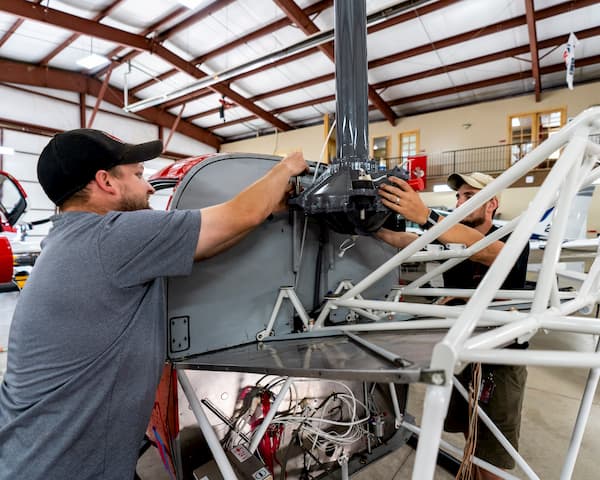
Does the school have industry connections?
Choosing an AMT school that has strong connections in the aviation industry, makes it easier to get a job after training. Some AMT schools have connections that guarantee technicians an interview once they are licensed, and some have connections that allow students to build a relationship with a company while training.
Does the school provide pathways to a career through connections and partnerships?
When a school has connections in the aviation industry, the students often benefit. Many AMT schools have pathway programs that guarantee interviews, provide tips, or give students extra experience that will help them get a job.
What are students saying about the school?
It’s always a good idea to talk to past or current students before picking an AMT school. Ask the school for student contact information, through social media, or by reading reviews online. Online reviews from students or parents can also give you an idea of how the school treats its students and how the students generally feel about the school. Just remember that no school is going to have all positive reviews, so don’t take every review you read as 100% accurate or as a reflection of what your own experience at that school would be.
How much does the program cost?
The price of a program often ends up making or breaking a students’ decision to attend a certain AMT school. Attending an AMT school can be expensive, which keeps many potential students from following their dreams and becoming a mechanic. Though it might seem expensive now, keep the future in mind. yourself up for the future, and that’s going to mean spending money now. AMT school is a great investment and AMT's have a great return on education (ROE). For every $1 spent on education, AMTs can expect to make $63 throughout their career. That’s higher than the ROE of a doctor or a lawyer!
What will you get for the cost?
So even though you may end up spending lots of money now on AMT school, you still need to make sure that you’re getting your money’s worth and aren’t paying for things you don’t need or won’t help you in your career. Make sure that the AMT school you choose charges you fairly and gives you enough training and experience to pass the A&P license exams and find a job. Advanced training and extra practice may come at an additional cost, but finding a school that offers some advanced training for no extra cost would be ideal.
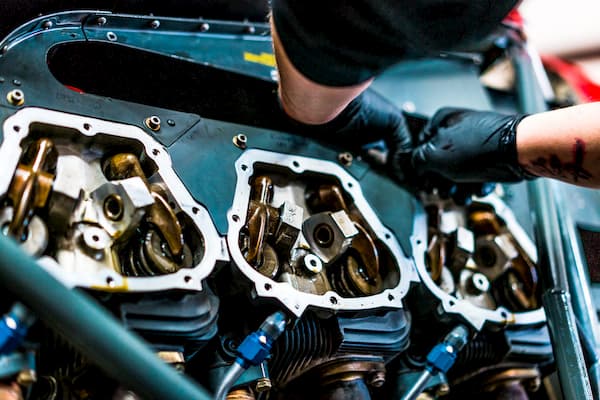
Is the AMT school attached to a university?
There are many benefits to attending an AMT school that’s attached to a university, and also a few drawbacks. A university AMT school will have more scholarships available, as well as federal financial aid and student loans. When you attend a university AMT program you’ll come away from the program with your A&P license and a university degree. This looks great to employers and will put you above the competition, but isn’t required to work as a mechanic.
The main disadvantage of attending a university AMT school is the price. University schools are going to be more expensive because students pay university tuition on top of the AMT school fees. Each university’s tuition rate is different, so it’s impossible to say how much more expensive a university school will be than a non-university one.
Does the program come with anything extra, like a degree or other certifications?
It’s good to know what you’ll get out of an AMT program. If the program is attached to a university, you’ll get either an associates degree or a bachelor’s degree. A degree will help you stand out to employers, but isn’t required to get a job as a mechanic.
Other than a degree, different programs may give different certifications or advanced training. This advanced training will also be helpful when finding a job, but again isn’t necessary. It’s up to you whether you want to find an AMT school that will give you anything extra beyond your A&P license.
The bottom line when choosing an AMT school
While it’s definitely a good idea to know the answers to these questions for each AMT school, the bottom line is that it’s up to you where you get your AMT training. Every AMT school should have the same goal—to get you your A&P license and get you started on your career as a mechanic. However, every AMT school will have different methods, classes, and training techniques. Finding the school that best fits your learning style and offers everything you want from training should be your top priority, even if it means spending a little extra money now so that you have a great training experience and are ready to enter the industry as soon as you graduate.
SUU's AMT program
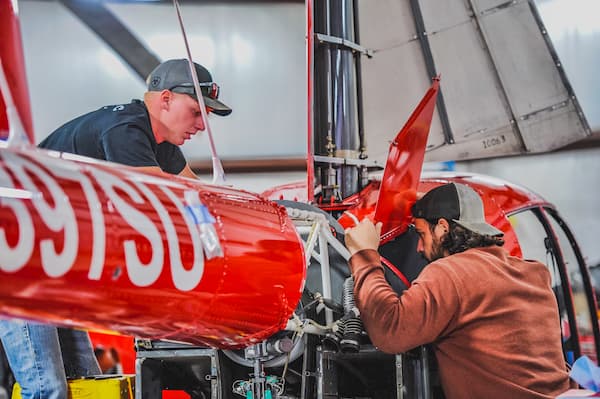
SUU Aviation truly cares about each AMT student and wants the best for them. SUU Aviation has gone to amazing lengths to provide their students with the best education possible. For example, when SUU Aviation noticed that the AMT training curriculum allowed by the FAA was extremely outdated, they decided to do something about it. The head of the AMT program wrote a bill and took it to Congress, where it was approved and signed by the president. Because of his and many others’ efforts, SUU Aviation is now the only AMT school authorized by the FAA to train students using an updated curriculum. This means that students will learn new maintenance techniques and practice on new materials rather than outdated ones that aren’t used in the field anymore. This is a serious advantage to SUU Aviation students because their future employers won’t have to waste time or money reteaching new AMT’s techniques and materials that are used today.
SUU Aviation does a great job of giving each student every possible opportunity to succeed, and everyone there takes seriously the school’s focus on safety and student preparedness. Professors are matched with students’ learning styles, and if a professor and student just don’t click, another professor can take over the training so that the student has the best experience possible.
Produced by SUU Aviation
The university's fleet includes 16 airplanes, 23 helicopters by the end of 2020, and state of the art maintenance training facilities. SUU Aviation offers advanced and relevant flight training in the safest and most efficient way possible. The program continues to be on the cutting edge of the industry, training tomorrow's aviation leaders.
With SUU Aviation, you’ll get a high-quality education and have the experience needed to get a job as a mechanic when you graduate.
This article was published more than 3 years ago and might contain outdated information or broken links. As a result, its accuracy cannot be guaranteed.
Tags: Aviation



